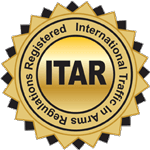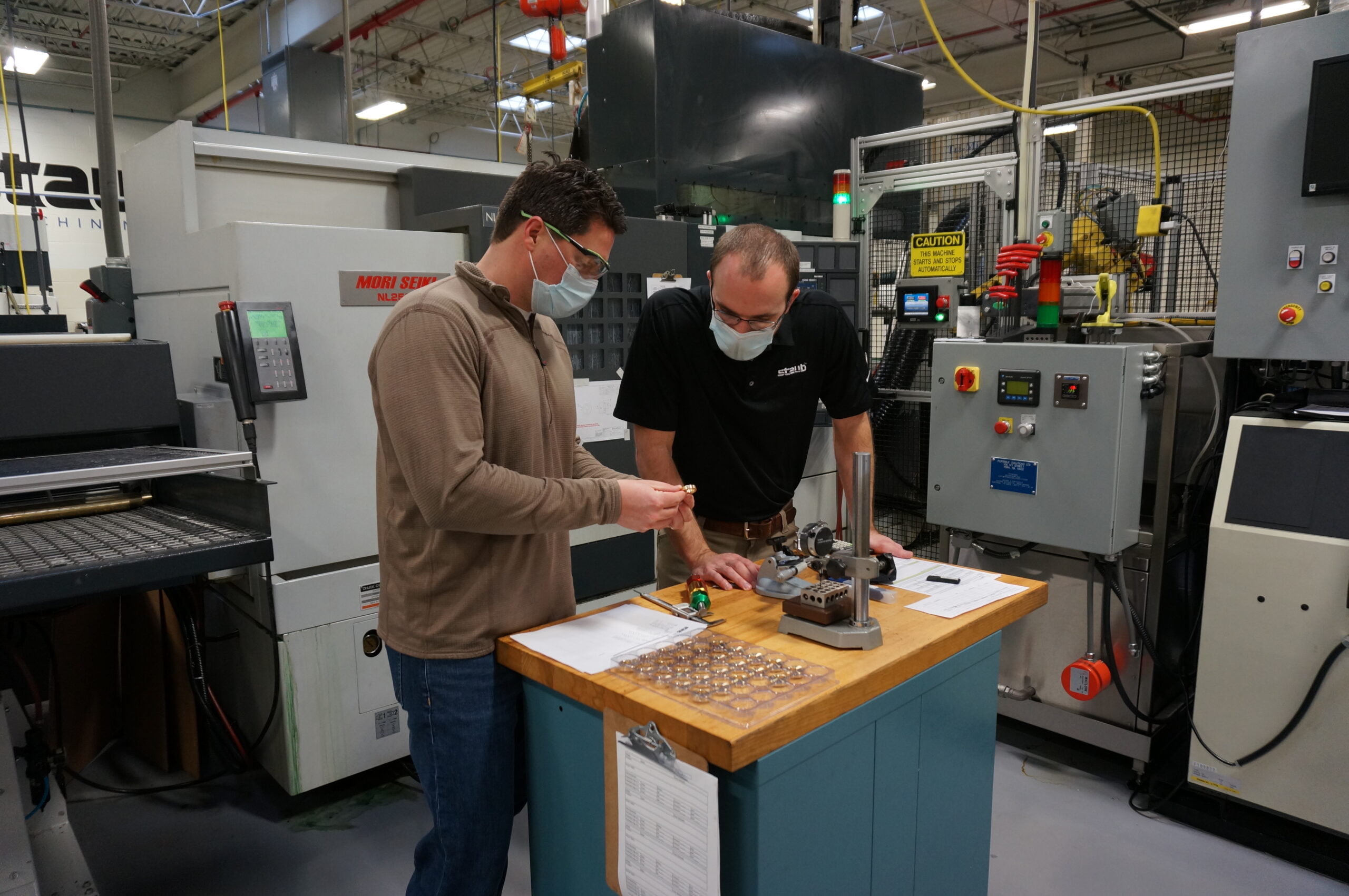This blog is Part 2 of our two-part series discussing processing requirements for precision parts. Before you get started, be sure to read Part 1 here.
A machining company must meet all the processing requirements for precision parts, from how it performs for the customer to ensuring efficiency throughout the fabrication process. Concentrating on making the process more economical serves to create productive long-term relationships between a precision machine company and its customers.
For customers to understand the process, it’s crucial to comprehend the steps machining companies go through to prepare, manufacture and finish their projects. Below, we explain what customers should expect from a precision machine company.
Understanding the Stages of the Precision Machining Process: Part 2
Customizing a Machining Plan
Once the engineering requirements for the component have been met, a precision machine company must formulate the mechanical process by which the CNC machine will form the parts. This comes from analyzing all the schematics, from which a precision machining team will adopt the best processing techniques for the job.
The CNC processing requirements for precision parts include the following:
- Product analysis that lists specific processing requirements for precision parts, along with specific information about component composition.
- Process planning evaluates the precision part’s appearance and processing requirements early, with each step established separately from the overall production.
- Path generation that guides machining work, through which processes are planned with software to optimize the tool’s path within the CNC machine’s parameter settings.
- Path simulation is when machinists and other stakeholders evaluate any likely complications that may develop by simulating the machine tool’s path to reduce scrap during production; this step generally focuses inspection on workpiece appearance, determining whether process planning for the tool’s path is practical.
- Path output establishes the connection between the software and the programming of the machine tool. This necessary step converts the desired tool path into a language the CNC tool understands.
Additionally, benchmarks, fixture installation, and processing tools were selected, and the processes’ steps, strategies, and parameters were to be used. All these steps must be properly written into the process flow, as it affects product quality.
When the paperwork is in order, and all the processes are set, manufacturing can begin. This will involve state-of-the-art equipment used in production, singularly or as a combination of operations that may include CNC machining, general assembly, laser cutting, waterjet cutting, and welding. The manufacturing process follows all production phases planned and quoted by the engineers. Precision parts require programming tool paths when using CNC machinery in processing, with adjustments made as needed. The setting up alone on a simple part can take hours, whereas more complex precision parts may take days.
Ready to automate your next job?
VIEW OUR EQUIPMENTPart Fabrication & Finishing
After all these processing requirements for precision parts are met, production moves on to the finishing process. The precision machine company often offers these sorts of value-added finishing services.
Staub Machine Company provides value-added finishing services to ensure the parts leave our facility polished and labeled. We also offer stamping, laser identification, polishing, deburring, and assembly operations. Assembly workers do everything from installing bushings and screws to electrical wiring components such as solenoids and harnesses.
Finishing processes include:
- Assembly
- Automated sandblasting
- Deburring
- Helicoil installation
- Inventory control
- Laser identification
- Micro-deburring
- Painting
- Polishing
- Stamping
- Thermal deburring
- Tumbling
The production stage will also include quality control to ensure the final product meets all the agreed-upon parameters and specifications. These quality checks and deburring occur between the times when parts are loaded into and unloaded from the fixtures. For components with particularly tight tolerances, quality control may even scan the parts at the machine, so they can be measured when stationary.
Post-Production Quality Assurance, Final Inspection & Shipping
After these quality checks during fabrication, a precision machine company often uses a coordinate measuring machine (CMM), an industrial tool that measures a component’s dimensions. This involves several mechanisms, including vision probes or scanners that measure the parts along the X, Y, and Z axes. These measurements are compared to initial designs and specifications to ensure the part is shaped as it’s supposed to be.
Before shipping, a final inspection must be made to ensure product quality. Depending on the customer, this may require a simple tag stating the part has undergone a final quality assurance assessment. The most advanced precision machine companies automate much of the quality control process; CMM processes enable them to provide binders of information about the fabrication processes utilized.
Many machining companies follow and are certified in ISO 9001 requirements for quality management, which also includes processes within the shipping process. After the final inspection, components are packaged and accompanied by paperwork (these days, often in digital format rather than actual paper) before being shipped to the customer. The last of the processing requirements for precision parts helps lower the risk of damage during transport and ensures delivery within the required timelines.
Ready to talk about your next project?
CONTACT US TODAYContact Staub Precision Machine, Inc.
Staub Precision Machine, Inc. specializes in machining operations to manufacture components with extremely tight tolerances across industries, including aerospace, defense, communications, and healthcare. Our innovative solutions benefit our customers by optimizing processes and ensuring quality in processing precision parts. Through collaboration with our customers, we use our advanced technology and systems to meet their needs best. Contact us today to learn more about our precision manufacturing processes!
This blog is Part 2 of our two-part series discussing processing requirements for precision parts. Read Part 1 here.



